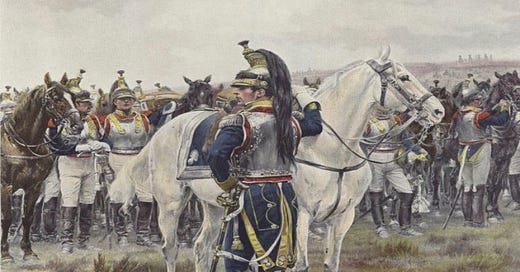Milstack Saturday (15 March 2025)
The best of what I read, watched, or listened to in the past week
In Former Navy SEAL on the Future of WarfareYT, Erik D. Prince, the founder of Blackwater offers a comprehensive critique of American defense policy, beginning with the way the United States acquires weapons and ending with the way it conducts diplomacy. In the course of doing this, he argues that the use of drones of the sort used in Ukraine and Yemen constitutes the biggest change in military technology since the introduction of the stirrup.
At The School of War, host Aaron McLean discusses ‘Modern Fortifications’ with David J. Betz, the author of The Guarded Age: Fortification in the Twenty-First Century. So, breakout your dusty volumes of VaubanIA, Boys, the bastion is back. Better yet, once you have immersed yourself in the thoughts of Professor Betz about the return of the gabion (the cool kids call them ‘Hescos’), his other ideas, such as a prediction of infrastructure-busting conflict in the United Kingdom of the near future, will make a lot more sense.
If such speculations whet your appetite for apocalyptic entertainment, you may enjoy the review of a classic television program(me) that Millennial Woes sent to the press (so to speak) last week. Called Survivors, this series, which made its debut some fifty years ago, depicts life in a near future where the trains are always late, the telephones rarely work, and gangs of predators roam the streets. (You can watch the first episode hereBC.)
At The Whirl of Reorientation, Brian ‘Ponch’ Rivera discusses the intellectual influences on the latter work of John R. Boyd. (Mr. Rivera calls the piece ‘John R. Boyd and the Free Energy Principle: A Speculative Intersection of Genius’.) Speaking of Colonel Boyd, our sister blog, Extra Muros has just published a short piece that compares the keystone in the arch of Boydian thought with the main message of the literature-loving neuroscientist Iain McGilchrist.
Note on Superscripts
YT marks a link to a video on YouTube.
BC indicates a link to a video on Bitchute.
IA will take you to the Internet Archive
Links that lack superscripts will take you to a page on Substack.
For more in the way of Milstack goodness …
To subscribe, share, or support:













Vauban siege concept applied to Stalingrad street fighting- move rubble to rubble building to building with parallels and communication “trenches” which may well be through buildings or even underground. What is important are the essential ends of Vauban’s method or “means” :
Parallels advancing.
Advancing Supports for fires.
Communications-LOCs mainly for logistics.
The objective being whatever node or hub is important to your opponent.
I have already idle scenarios of Vauban’s methods of siege in alternative history of Stalingrad street fighting.
This should be an interesting link.
We should not do more than consider the situation. There’s few if any conceivable bastions capable of withstanding non nuclear weapons and explosives such as Fuel Air Bombs or Hypersonic penetrating weapons such as were just demonstrated by Russia.